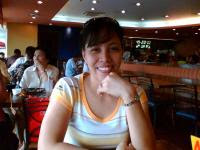
WEDNESDAY, July 2 (HealthDay News) -- A new technique for finding and analyzing stray cancer cells in the blood of lung cancer patients may make it possible for doctors to one day not only determine the genetic "signature" of particular tumors but to monitor changes in those cells and adjust treatments accordingly.
"I think this is key to personalized medicine," said Dr. Daniel Haber, senior author of a paper detailing the technology, to be published in the July 24 issue of theNew England Journal of Medicinebut released early online Wednesday. "As we get to targeted therapies in increasing numbers, and increasing understanding about the genetics that guide targeted therapies, we need a way to know what we're treating."
The "CTC chip" technology described in the new paper may also one day aid in the detection of cancers that are likely to spread. "This is an early warning sign we could use for earlier detection," said Haber, who is director of the Massachusetts General Hospital Cancer Center in Boston.
ad_icon
A previous study published inNatureused the CTC (Circulating Tumor Cells) chip technology to look at CTCs in lung, pancreatic, prostate, breast and colon cancers. The CTC chip successfully found such cells in 99 percent of the samples.
"We're very interested in the biology of these cells because no one has really been able to study metastasis [spread of cancer to other parts of the body] in action," Haber said. "These are the cells that cause metastases and the lethality of cancer. Now that we can identify and purify them in decent numbers, we can study and hopefully identify some of their vulnerabilities. It opens up a whole field of human metastasis and human therapies."
The CTC chip is a silicon chip about the size of a business card that has 80,000 "columns" coded with an antibody that acts like a "glue" to capture tumor cells "that have no business being in the blood," Haber explained.
Haber and his colleagues analyzed blood samples from 27 patients with non-small cell lung cancer, 23 who had EGFR gene mutations and four who did not. CTCs were identified in all samples and in genetic analyses from mutations 92 percent of the time.
Mutations in EGFR, a protein, can help predict whether these tumors will respond to a family of drugs called tyrosine kinase inhibitors.
"Even in the three to four months that we followed patients, the genetic make-up of the tumors changed. Resistant mutations appear and other mutations appear, obviously because we're doing things [with drug therapy] to the cancer," Haber said. "But the way we practice oncology we don't typically test for that. We do one biopsy which takes a tiny, tiny amount and assume that for the rest of the course, the tumor is the same."
"It's important to know in real time what you're treating," he continued. "We need to be able to follow the patient without needing to re-biopsy the tumor every time."
The technology is in its infancy, however. "This is still in a very, very early stage where it takes a long time to handle every sample, to flow the blood through the chip," Haber said. "This is a proof of principle that we can do this. We need a much more automated system for larger clinical trials."
Dr. Len Horovitz, a pulmonary specialist at Lenox Hill Hospital in New York City, said that "you have to have some circulating cells to do this test, but it's very exciting because they're getting a genetic fingerprint of a tumor which will tell an oncologist what therapy the tumor might respond to or not respond to.
"It's expensive, but it may well be that if we can identify patients who can have a personalized regimen that works, we will be saving the cost of treating all those patients with regimens that don't work," he added.
Two other studies looking at lung cancer are published in the July issue of theJournal of Thoracic Oncology.
One, a review of existing studies, concluded that analyzing so-called volatile organic compounds in the breath of lung cancer patients may hold promise as a tool to detect cancer earlier. The technique deserves further attention, said researchers from the Cleveland Clinic.
For the second study, researchers at the University of Alabama at Birmingham found certain socioeconomic factors that may contribute to a higher death rate among blacks with non-small cell lung cancer. These included a higher smoking rate among blacks patients than white patients; a greater delay to the start of treatment among blacks; and less willingness to undergo chemotherapy among blacks than their white counterparts.








No comments:
Post a Comment